Published: June 26, 2024 | Last Updated on: June 26, 2024 | by Hema
Pneumonia in children is common & while it is serious, it can be easily cured with timely treatment. Learn more about causes, signs & remedies.
Jump To hide What is Pneumonia? Facts about Pneumonia in Children: Pneumonia in Children – A Complete Guide Types of Pneumonia 1. Viral Pneumonia 2. Bacterial Pneumonia 3. Mycoplasma Pneumonia 4. Fungal Pneumonia Causes of Pneumonia in Children Signs & Symptoms of Pneumonia in Children Diagnosis of Pneumonia in Children Treatment of Pneumonia in Children 1. Oral antibiotics 2. Nebulizer/Inhaler 3. Hospitalization Prevention of Pneumonia in Children 1. Vaccination 2. Early breastfeeding 3. Nutrition 4. Good hygiene 5. Clean air 6. Proper antibiotic use Home Care for Pneumonia in Children References: Buy Healthy Nutritious Baby, Toddler food made by our own Doctor Mom !One thing we all pray for constantly is good health for our little ones, and we can’t imagine them falling sick. However, kids do fall ill, and rather than panicking about it, it helps to be informed so we can deal with the situation should it arise. That’s why today we’re going to talk about a common childhood illness, pneumonia, and everything you should know about it.
What is Pneumonia?
The word pneumonia is derived from the Greek word for lung, ‘pneumon’. Hence, pneumonia roughly translates to a ‘disease of the lung’. It is essentially an acute respiratory infection that affects the alveoli.
⭐ Download FREE Recipe Ebooks for Babies & Toddlers

The alveoli are small sacs found in the lungs, which fill with air when we breathe. However, when the lungs are affected by pneumonia, the alveoli get filled with fluid like pus, which reduces the intake of oxygen and makes breathing difficult.
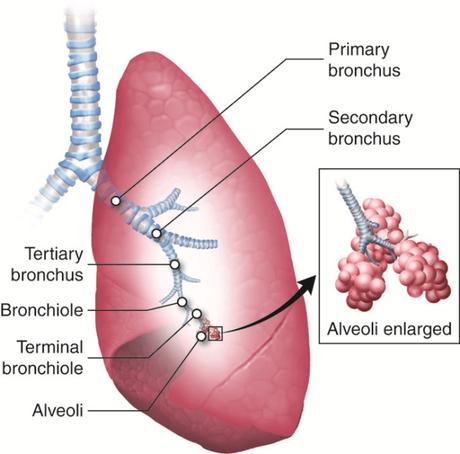
While pneumonia can affect people of any age, they are of particular concern when children are affected, due to several reasons. As a result, children from a major part of the global pneumonia burden, especially in Asian and African countries. Here are some more facts about pneumonia in children.
Facts about Pneumonia in Children:
- Pneumonia is the single largest infectious killer of children worldwide
- 14% of all deaths of children under 5 years old is due to pneumonia, which is over 725,000 children every year
- India has the second highest burden of childhood pneumonia deaths in the whole world
- Around 190,000 newborns die every year due to pneumonia
- It is estimated that one child dies every 43 seconds from pneumonia
- Nearly half of all pneumonia-related deaths are due to air pollution
The most important fact is that almost all of these deaths are preventable – if only we act fast and seek proper treatment. Here is a complete guide on everything you need to know about pneumonia in children.
Pneumonia in Children – A Complete Guide
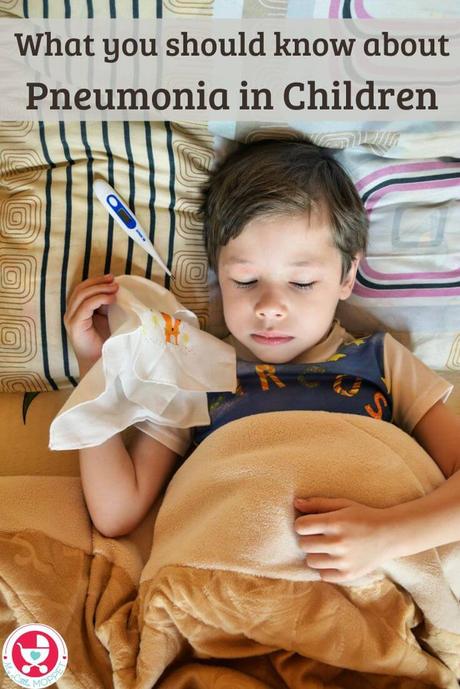
Types of Pneumonia
Based on the pathogen that causes pneumonia, it can be classified into four main types.
1. Viral Pneumonia
This is the most common kind of pneumonia, accounting for almost 1/3rd of all pneumonia cases. Viral pneumonia can be caused by various viruses, of which Respiratory syncytial virus (RSV) is the most common in children under age 5. Other viruses that can cause pneumonia are the adenovirus, influenza virus and the parainfluenza virus.
Viral pneumonia is usually milder than bacterial pneumonia and clears up faster too. The symptoms occur over a period of time rather than suddenly.
2. Bacterial Pneumonia
Different kinds of bacteria can cause bacterial pneumonia, the most common one being streptococcus pneumonia. Group B streptococcus is more common in newborns while Group A streptococcus is mostly found in children over the age of 5. Staphylococcus aureus and Haemophilus influenzae type b (Hib) are other kinds of bacteria that can cause pneumonia in children.
Bacterial pneumonia may affect just a small part of one lung or both lungs. It is less common than viral pneumonia but when it occurs, the onset is quick and kids get sick fast. A person with viral pneumonia is more likely to get bacterial pneumonia.
Bacterial pneumonia has more sub-types, like pneumococcal pneumonia, mycoplasma pneumonia or walking pneumonia, and pertussis or whooping cough.
3. Mycoplasma Pneumonia
Mycoplasma pneumonia is caused by mycoplasma and also known as walking pneumonia. This pneumonia has mild symptoms, so the child may not appear visibly sick. Hence the name ‘walking pneumonia’ since children may go about their daily activities even while infected.
Walking pneumonia is also called atypical pneumonia since the symptoms vary from patient to patient. It affects mostly older children and young adults, although all age groups are vulnerable.
4. Fungal Pneumonia
This is a rare kind of pneumonia caused by breathing in tiny fungal spores. It is usually caused by contaminated soil or bird droppings and is generally seen in people who work in such professions. Others vulnerable to fungal pneumonia are people with compromised immune systems, due to cancer, organ transplants or autoimmune diseases.
Causes of Pneumonia in Children
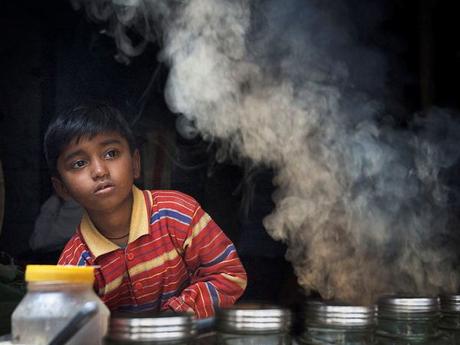
While pneumonia is caused by bacteria or viruses, some factors can increase the risk of children getting infected, such as these:
- Weak or immature immune systems
- Undernourishment or wasting
- Premature birth
- Abnormal lungs or airway
- Asthma
- Chronic illness, like a heart, lung or kidney disorder
- Living in crowded environments
- Outdoor air pollution or exposure to smoke
- Indoor air pollution, caused by certain cooking methods
- Smoking by family members
Pneumonia is contagious and is spread through the air or fluids. When an infected person coughs or sneezes, the airborne particles or droplets can enter another person’s body. Touching contaminated surfaces or objects can also transmit the disease.
Signs & Symptoms of Pneumonia in Children
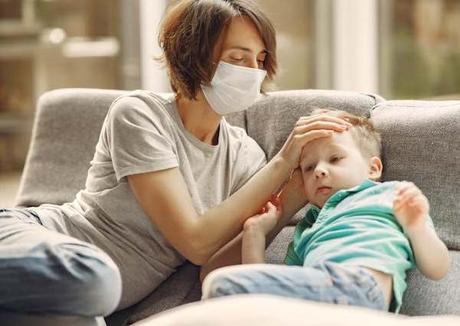
All types of pneumonia have similar symptoms, although the onset and intensity may differ. Bacterial pneumonia manifests rapidly, while viral pneumonia is slower and milder. Wheezing is also more common in viral pneumonia. Here are the most common symptoms of pneumonia in children:
- Cough
- Difficulty breathing
- Fast breathing where the lower chest may retract when they inhale
- Flaring of nostrils
- Bluish tinge on the nails or lips
- Shivering and chills
- Fever
- Chest pain when coughing
- Abdominal pain
- Decreased appetite
- Increased crying (in babies)
- Vomiting or diarrhea
- Wheezing
- Muscle pain
- Fatigue
- Irritability and fussiness
- General discomfort
Diagnosis of Pneumonia in Children

Pneumonia requires a doctor’s diagnosis, and this will begin with an examination with a stethoscope, called auscultation. After that, the doctor may proceed to prescribe any of the following tests:
1. Chest ultrasound – This test uses ultrasound technology to generate a quick image of the chest organs while also providing information about blood flow to the organs.
2. Chest X-ray – This test creates an image of the lung area, including bones, tissues and organs.
3. Blood tests – A complete blood count can show if an infection persists while arterial blood gas can show the amount of carbon dioxide and oxygen in the blood.
4. Sputum culture – In case of a productive cough, the sputum that is coughed up is tested for any infection.
5. Pulse oximetry – This involves the use of a small machine called an oximeter that measures the amount of oxygen in the blood. A small sensor is placed on a finger or toe, and the reading is obtained.
6. Chest CT scan – This is a test that creates images of the chest with finer details, and is used when other tests are non-conclusive.
7. Bronchoscopy – This is an invasive procedure that looks inside the lung airways, and is rarely done on children.
8. Pleural fluid culture – This is a more complex procedure that involves taking a fluid sample from the space between the lungs and chest wall and testing it for infection. This is rarely, if ever, done on children.
Once pneumonia is diagnosed, treatment is started right away. With proper treatment, pneumonia is easy to recover from. Symptoms usually improve within 12-36 hours of starting treatment, and bacterial pneumonia usually clears in a couple of weeks. Viral pneumonia and walking pneumonia may take a month or so to get completely treated.
Treatment of Pneumonia in Children
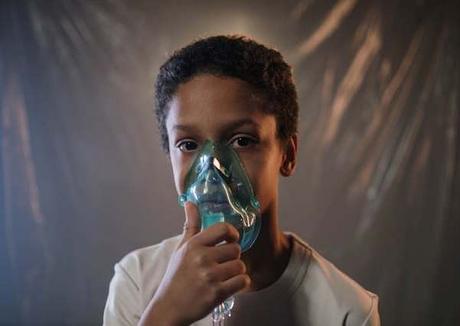
1. Oral antibiotics
This is the first line of defense for bacterial pneumonia, and the most common prescription is for amoxicillin dispersible tablets, for a course of 5-7 days. Symptoms start to improve within two days of starting the course, although coughing may persist. Antibiotics do not work for viral pneumonia as they don’t cure viruses.
2. Nebulizer/Inhaler
Wheezing is a common symptom of pneumonia, especially viral pneumonia. In this case, the doctor may prescribe a nebulizer or inhaler, which can be used at home.
3. Hospitalization
If the pneumonia is severe or if the child is slow to respond to other methods of treatment, hospitalization may be required. At the hospital, the child may be given oxygen, extra fluids or intravenous antibiotics. Extremely severe cases may require care in the ICU.
Prevention of Pneumonia in Children
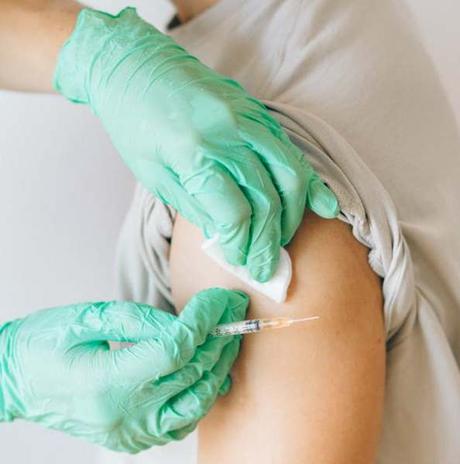
1. Vaccination
The best way to prevent pneumonia is through vaccination – both the regular vaccination schedule as well as the additional Pneumococcal (PCV) vaccine.
The American Academy of Pediatrics recommends that babies receive the PCV13 vaccine at 2 months of age. Subsequent doses are to be administered at 4, 6, and 12 to 15 months of age. The PPV23 vaccine is recommended for children aged 2 years and above.
Other vaccines like the DPT, Measles and Hemophilus Influenza B (Hib) vaccines also offer children protection against pneumonia.
2. Early breastfeeding
The WHO recommends exclusive breastfeeding for the first 6 months of life, which is a great way to prevent pneumonia by boosting immunity. It also reduces the length and severity of the disease if the child does become infected.
3. Nutrition
One of the risk factors for pneumonia in children is malnourishment or wasting, proving how important adequate nutrition is in preventing the disease. An extra Vitamin A supplementation has also shown to work in keeping pneumonia at bay.
4. Good hygiene
Ensuring good hygiene can prevent children from catching bacteria and viruses from contaminated air, water or surfaces. Teach children from an early age to sneeze into a tissue or into the crook of their elbows. Encourage good handwashing practices and maintain good hygiene around the home.
5. Clean air
With air pollution being a major cause of pneumonia in children, it’s important to cut down on sources of indoor air pollution, like the use of unclean fuels. If anyone in the family is ill, keep kids away till they recover.
6. Proper antibiotic use
As mentioned, antibiotics are the first line of defense against bacterial pneumonia, but overuse and misuse of antibiotics can lead to antibiotic resistance which can make treatment difficult. Always use antibiotics only with a doctor’s prescription and as per the prescribed dosage.
Home Care for Pneumonia in Children

While pneumonia of any kind requires medical treatment, most cases don’t require hospitalization and can be treated at home. Here are a few ways to ensure that your child is comfortable and recovers quickly:
- In case of fever above 101° F, use the right dosage of paracetamol
- Check your child’s temperature at least twice a day till the fever subsides
- Offer lots of fluids to prevent dehydration and to make up for the loss of appetite
- For babies, continue to breastfeed on demand
- Let your child get lots of rest, and let them resume activity gradually
- Older children can be propped up on pillows for easier breathing, rather than lying flat
- Have a separate set of utensils and crockery for the child
- Make sure the indoor air is clean and the room is ventilated
- Add a mist humidifier to prevent dryness
- Cut down on unwanted interactions with others
Here are a few foods that can help speed up the recovery process:
1. Whole grains – Whole grains are rich in fiber and are essential to help the child regain energy
2. Green leafy vegetables – These contain antioxidants that help in the recovery of respiratory illnesses
3. Protein-rich foods – Protein is the building block of the body that repairs diseased cells and boosts recovery
4. Yogurt – Known for its probiotic benefits, this also boosts immunity and fights pneumonia-causing pathogens
5. Honey – Honey has antibacterial properties and can help ease symptoms of cough
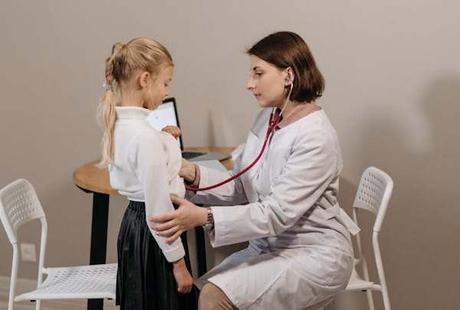
Pneumonia symptoms start improving soon after starting treatment, but the cough may persist for a few more weeks. However, over-the-counter cough syrups are not recommended for pneumonia, since coughing is the body’s way of bringing up the phlegm and clearing the lungs.
However, you should go to the doctor if you notice any of these:
- Persistent fever even after using antibiotics
- Difficulty breathing or fast breathing
- High fever (over 100.4°F for babies under 6 months, and over 102°F for older babies)
- Swollen joints
- Stiff neck
- Increased sleepiness
- Bluish tinge in the lips or nails
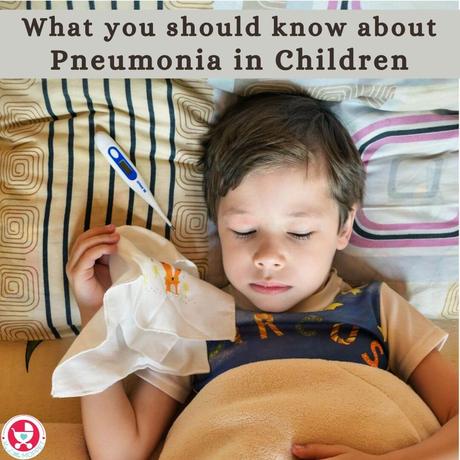
References:
- World Health Organization (WHO)
- UNICEF
- The Lancet
- American Academy of Pediatrics (AAP)
- Indian Academy of Pediatrics (IAP)
- Boston Children’s Hospital
- Yale Medicine
Buy Healthy Nutritious Baby, Toddler food made by our own Doctor Mom !
Shop now!You may also like
- Why Children Lie and What to do

- 15 Children's Books about India
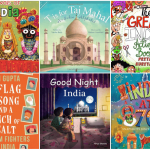
- Is Raw Honey safe for Children?

- How to make Boredom Box for Children

- 5 Best Children's Authors of All Time
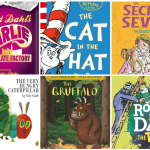
- How to Use Essential Oils for Children

Filed Under: Health
